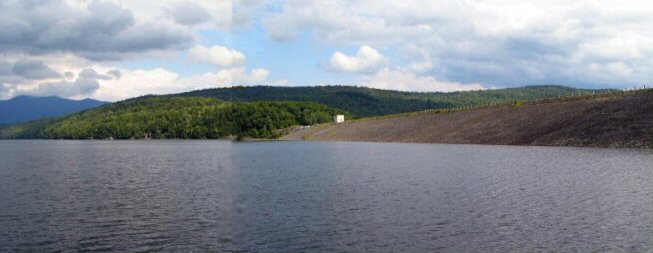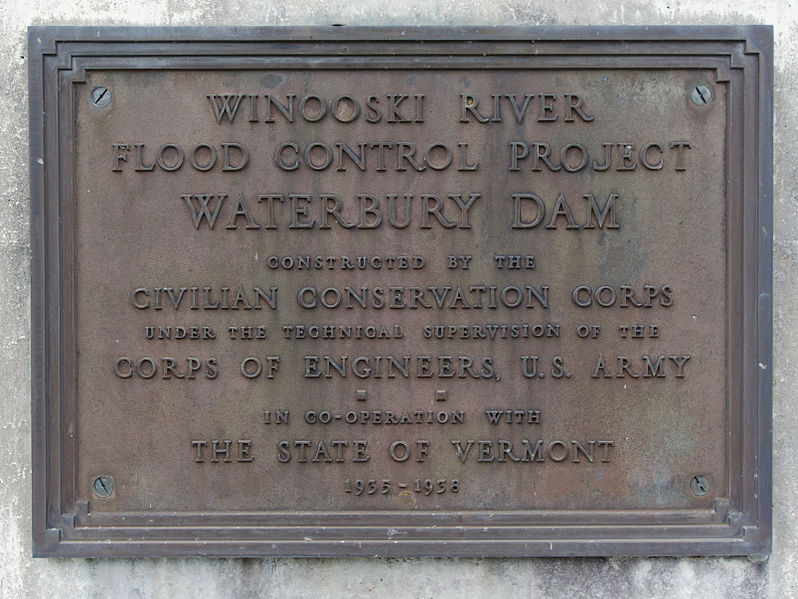- City:
- Waterbury, VT
- Site Type:
- Infrastructure and Utilities, Flood and Erosion Control, Dams
- New Deal Agencies:
- Federal & Military Operations, Work Relief Programs, Army Corps of Engineers, Civilian Conservation Corps (CCC)
- Started:
- 1935
- Completed:
- 1938
- Quality of Information:
- Very Good
- Marked:
- Unknown
- Site Survival:
- Extant
Description
The U.S. Army Corps of Engineers and the Civilian Conservation Corps (C.C.C.) combined efforts to construct the Waterbury Dam in Waterbury, Vermont during the Great Depression.
On November 3 and 4, 1927, torrential rains created a disastrous flood that paralyzed Vermont. Little River’s rising waters drove the valley residents to their roofs and isolated the hillside farmers. Fifty-five people in the Winooski Valley lost their lives, and property damage was estimated at $13,500,000. A second flood occurred in 1934.
These events spurred a plan by the US Army Corps of Engineers to built a set of four dams in central Vermont from 1933 to 1938.
Construction of the Waterbury Dam began in April 1935 and was completed in October 1938 by five thousand men of the U.S. Army Corps of Engineers and the CCC. (A power plant was added in 1956).
Waterbury Dam is earth fill with stone slope protection; it is 1,845 feet long and 187 feet high.
Nearby, at todays Little River Camp are the remains of the former CCC camp that operated from 1933 to 1939 and, when fully operating, had more than 80 buildings, and housed 2,000 men at its peak. CCC enrollees worked on the Waterbury and other dams, plus Mt. Mansfield State Park.
A key aspect of this and the other dams is that they were built by a CCC company made up entirely of African American World War I veterans.
Source notes
https://www.vtstateparks.com/pdfs/littleriver_area_history.pdf
https://www.nae.usace.army.mil/Missions/CivilWorks/FloodRiskManagement/Vermont/Waterbury.aspx
Site originally submitted by Andrew Laverdiere on December 15, 2014.
Contribute to this Site
We welcome contributions of additional information on any New Deal site.
Submit More Information or Photographs for this New Deal Site



Join the Conversation